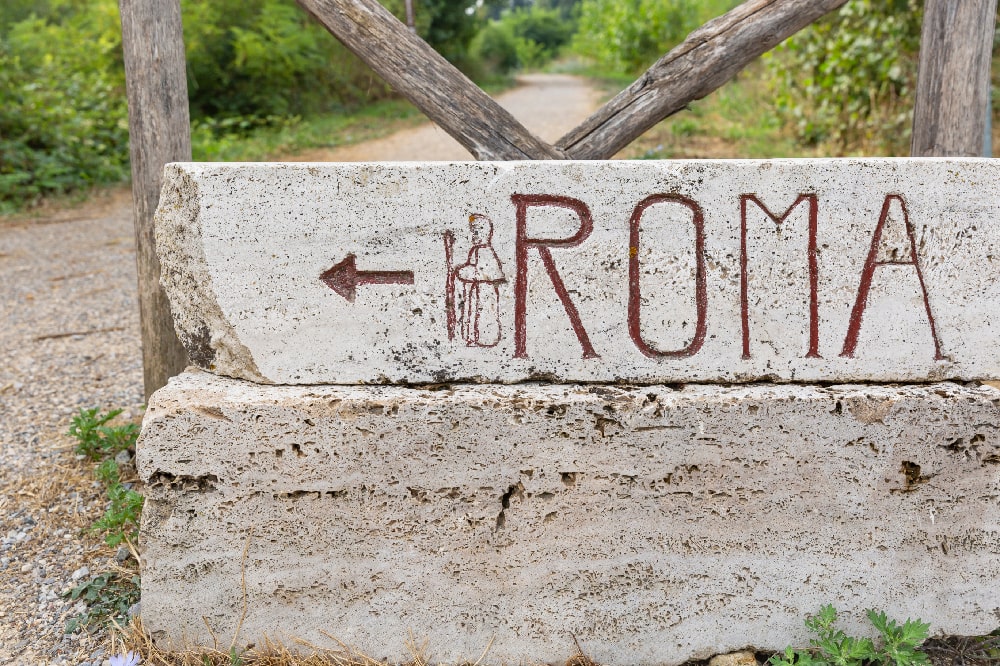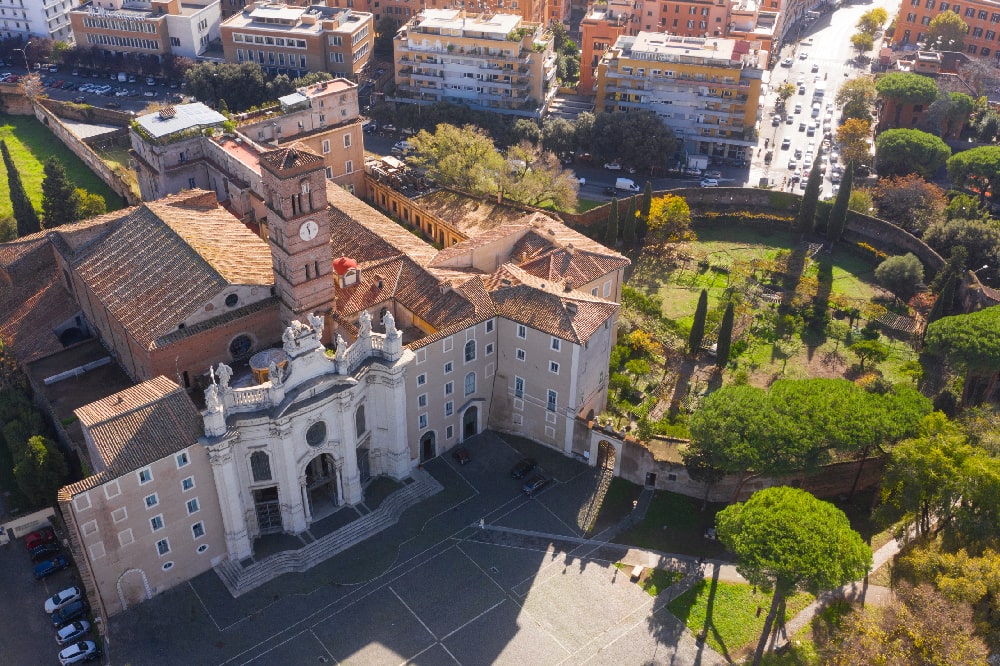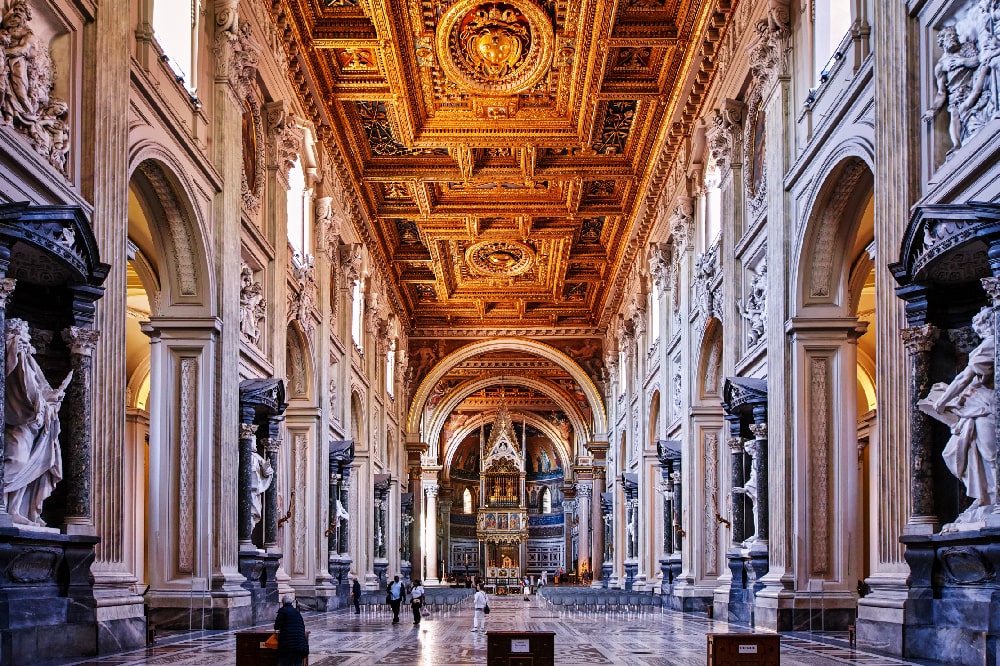Since the Middle Ages, the Basilica of the Holy House has been the heart of devotion to Our Lady of Loreto, mother of Jesus, the Virgin of Laurel. We get to know this sanctuary better, its miracles and the mystery of the “flying” translation.
Contents
The Basilica of the Holy House in Loreto, in the province of Ancona, has existed since the fourth century and has always been one of the main places of Marian pilgrimage in our country. It is no coincidence that the Italian “Lourdes” is defined.
But what makes this small basilica dedicated to the cult of Our Lady of Loreto so special?
It is soon said: inside are the remains of the Holy House, or the house where the Virgin Mary was born, grew up, and received the visit of the Archangel Gabriel, the same house where Jesus took his first steps.
But how did the Holy House get to Loreto? This is a really interesting story!
History of Our Lady of Loreto
On 10 December, the liturgical feast of Our Lady of Loreto is celebrated. The festival is also called the Feast of the Coming and has very ancient origins.
In fact, it has been celebrated for over four hundred years on the night between 9 and 10 December. A characteristic of this festival is the lighting of fires that light up the night, in the cities and the countryside, and that recall those that on that same night in 1296 would have been lit to accompany a very particular procession. This is the procession of angels that brought the Holy House to Loreto.
Legend has it that the Holy House of Mary was taken away from Nazareth by the angels when Palestine fell to the infidel Turks in 1291.
We will see in a later paragraph how this translation would have taken place. What is certain is that the city of Loreto was founded precisely in the place chosen by the heavenly messengers as the new seat of the Holy House, on the top of Monte Prodo, along the Via Lauretana that already in the thirteenth century connected Rome to the port of Ancona.
Thus was born the veneration of Our Lady of Loreto, a symbol of the human and family dimension of Jesus and of the entire Holy Family, a warning and memory for all the pilgrims who since the Middle Ages went to these places, of the mystery of the Incarnation of Jesus, on the one hand, and of the call of the Virgin, on the other.
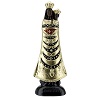
Our Lady of Loreto thus embodies the Virgin, humble servant of the Almighty, who by accepting Her commission has made itself the “home” of God and of the whole Church. Our Lady of Loreto and the Holy House, the centre of her worship, thus recall the time when God became flesh and descended into the world to save humanity. The evangelical virtues of the Holy Family revive in Mary’s choice to serve the divine Will.
This particular dimension of the Madonna of Loreto has made the Basilica dedicated to her the heart of a cult that truly echoes that addressed to the Holy Family in Nazareth. In this place, faithful and pilgrims have gone over the centuries to find comfort, the sick and infirm have come in search of healing and consolation in suffering.
There the Litany of Laurel were also born, the supplications that are recited or sung at the end of the Rosary, which in the Holy House of Loreto were already intoned before spreading throughout Christendom becoming the most popular prayers dedicated to the Mother of Jesus
On 24 March 1920, on the eve of the Annunciation of the Lord Pope Benedict XV issued the Decree declaring Our Lady of Loreto the patron saint of air travellers and aeronautics.
On 7 October 2019, Pope Francis, through the Congregation for Divine Worship and the Discipline of the Sacraments, included in the Roman Calendar the optional memory of the Blessed Virgin Mary of Loreto.
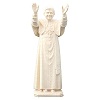
Miracles of Our Lady of Loreto
In addition to the mysterious Translation of the Holy House, over time Loreto has been the scene of many miracles and healings.
For this reason, every year thousands of faithful go to the Shrine in the hope of the intercession of the Virgin Mary.
Most of the miracles attributed to Our Lady of Loreto concern miraculous healings, which have involved men, women and children over the years.
Just to mention a few examples, little Lorenzo Rossi, was saved from bronchopneumonia and bronchiolitis that in 1959 had brought him to the end of his life.
His desperate mother poured a small bottle of blessed oil from the Shrine of the Holy House of Loreto on his forehead and began massaging his chest. The child, already cyanotic, began to breathe again and then regained his health.
Gerry De Angelis was also already in a coma, when his father, who was going to the hospital at his bedside, felt the need to go to Loreto.
When after the detour, he reached his son, he had come out of a coma.
Giacomina Cassani, a sixteen-year-old from Bardi, had been diagnosed with a soft-elastic tumour in her left thigh in 1930.
Now reduced to a wheelchair and imprisoned in a bust, the young woman was taken on a pilgrimage to Loreto and here at the passage of SS. Sacramento she felt at first a strong pain, then an unexpected relief. From that moment on, she began to feel better, until she was completely healed.
Bruno Baldini, a boy from Florence, on 23 October 1934 was involved in a terrible motorcycle accident that caused a serious brain injury that made him mute and with serious motor difficulties. One day he heard a clear voice telling him to undertake a pilgrimage to a Sanctuary.
He chose Loreto, and on the day of his arrival, while he was in the hotel, he heard that voice again, which ordered him to get up and speak. And so he did, to everyone’s amazement.
Why is Our Lady of Loreto black?
Before the beautiful wooden statue depicting the Madonna of Loreto, those who went to the sanctuary turned their veneration to an ancient icon, which depicted the face of Mary. Like many ancient icons, it was quite dark, probably also due to the smoke of candles and oil lamps.
![]()
Sacred Icons: the ultimate guide
Sacred Icons. Only mentioning them evokes exotic and charming suggestions…
When at the beginning of the 16th century it was decided to replace the icon with a wooden statue carved in spruce and then painted, it suffered the same fate, as a result of smoke. The statue was then destroyed in a fire in 1921, and replaced with another, this time made of Lebanese cedar wood and painted in an even darker shade.
Sanctuary of Loreto: the miraculous “flying” translation
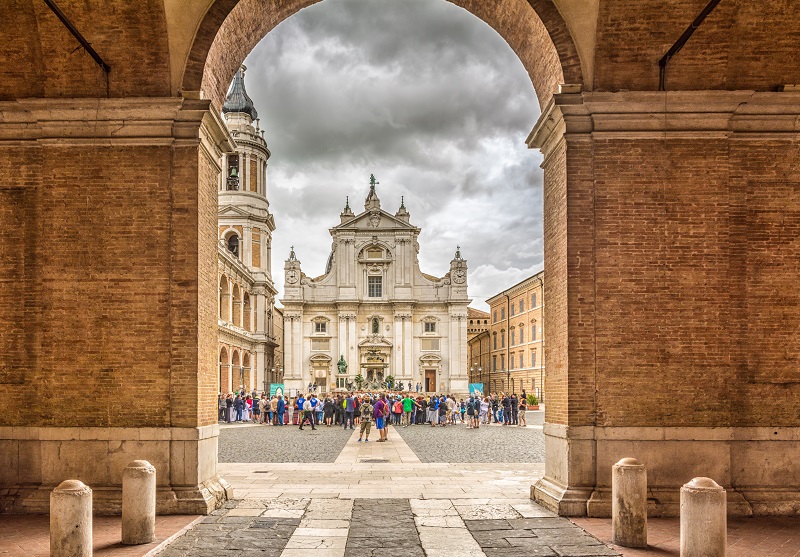
We have already mentioned the miracle of the Flying Translation of the Holy House from Nazareth to Loreto.
The ancient tradition dates back to 1296, when the hermit Fra’ Paolo della Selva told the Authorities a fascinating story, later reported in various documents, over time, enriching it with more and more picturesque details.
According to this story, the angels would have taken the Holy House from Palestine, which fell to the Turks in 1294.
The journey of the Holy House would have touched first Tersatto, Trsat, now a district of the city of Rijeka, in Croatia, but the angels decided to cross the sea and bring their precious cargo to the territory of Recanati, where they placed the Holy House first in a forest that belonged to a gentlewoman named Loreta, then on the field of two brothers, and finally, on the night between 9 and 10 December 1296, on the top of Monte Prodo.
Subsequently, to protect the Holy House, a wall was erected around it, then a sanctuary, which immediately became a destination for pilgrimages of faith.
It is difficult to understand what is real in the history of the Translation, and what is the result of folklore. One version of the story is that it was a wealthy family of princes related to the imperial family of Constantinople who brought the remains of the Holy House to Loreto. What is certain is that even today the story of the mysterious ‘journey’ of the Holy House, with all that it represents, fascinates pilgrims who visit the Shrine.

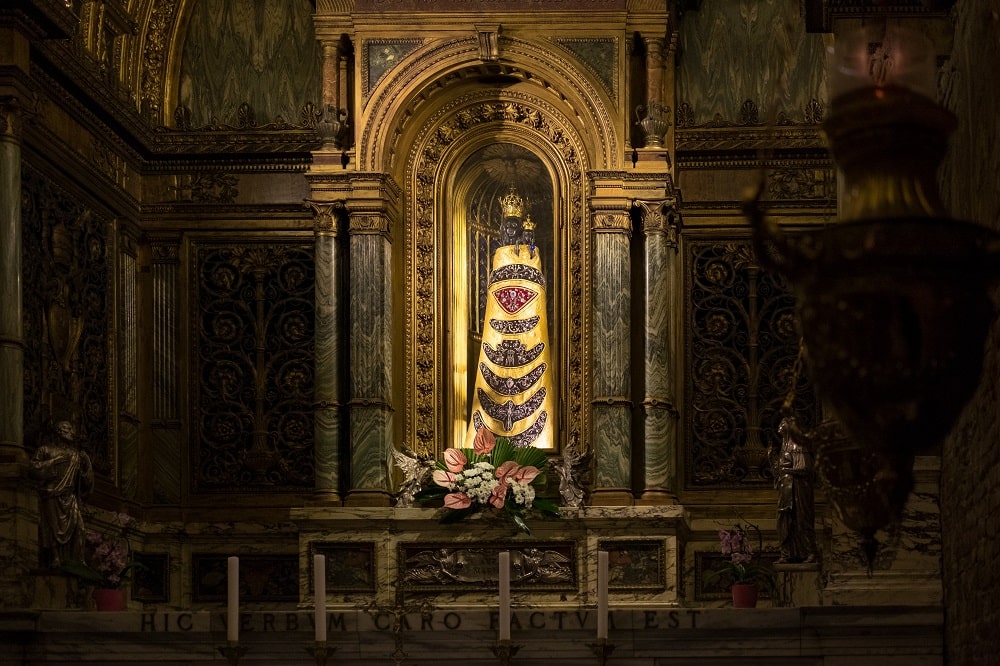
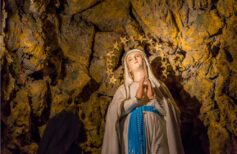
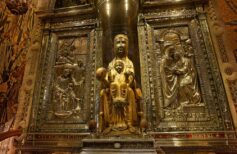

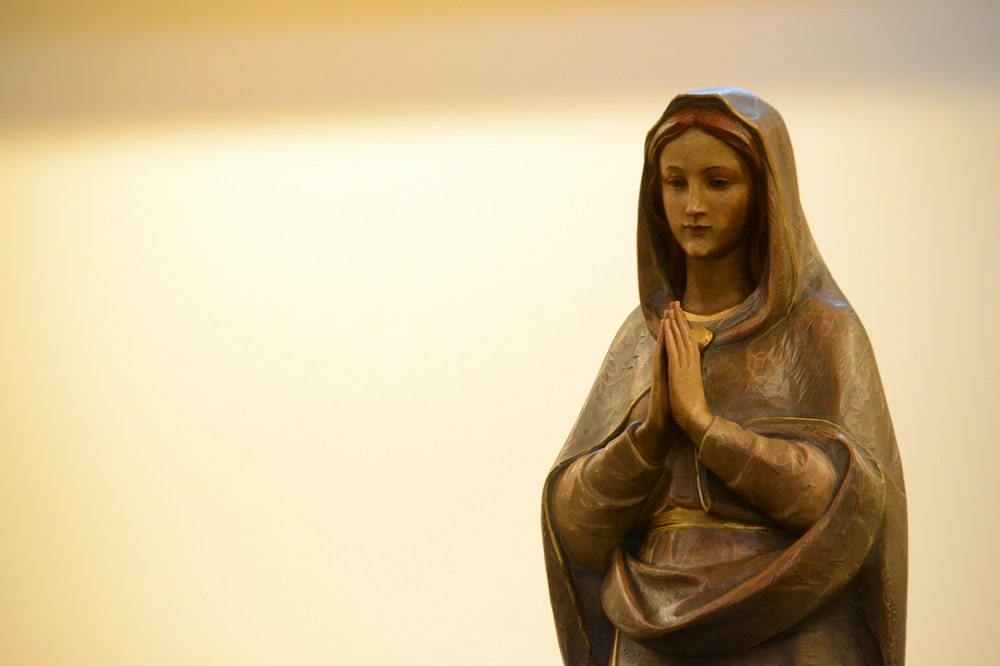
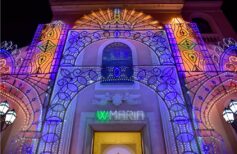
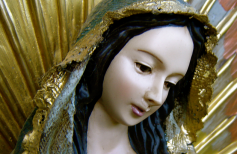

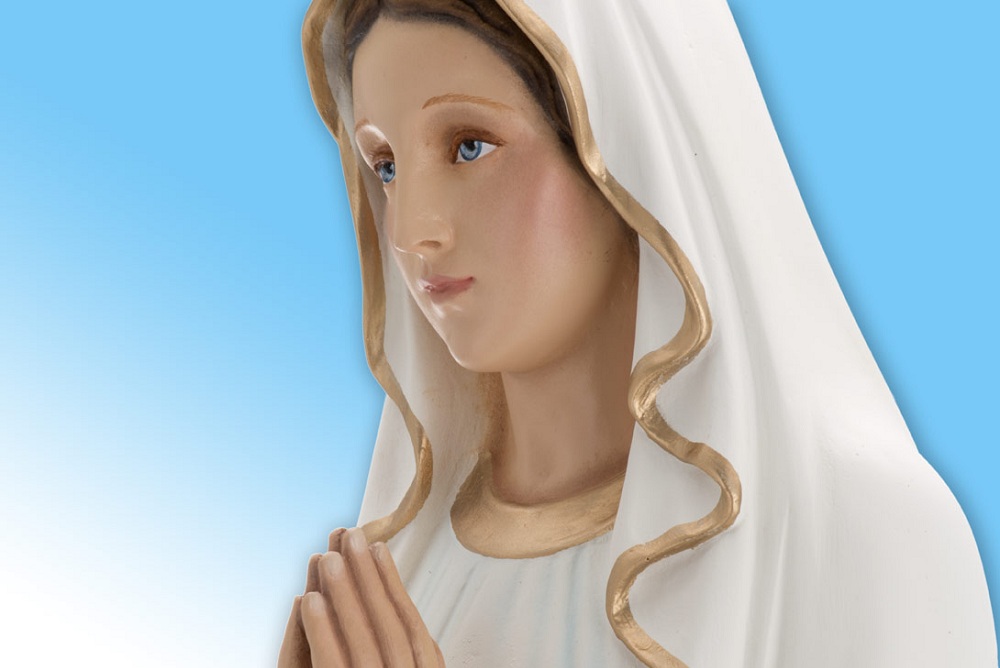
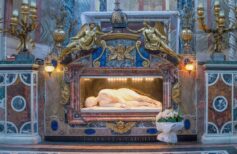






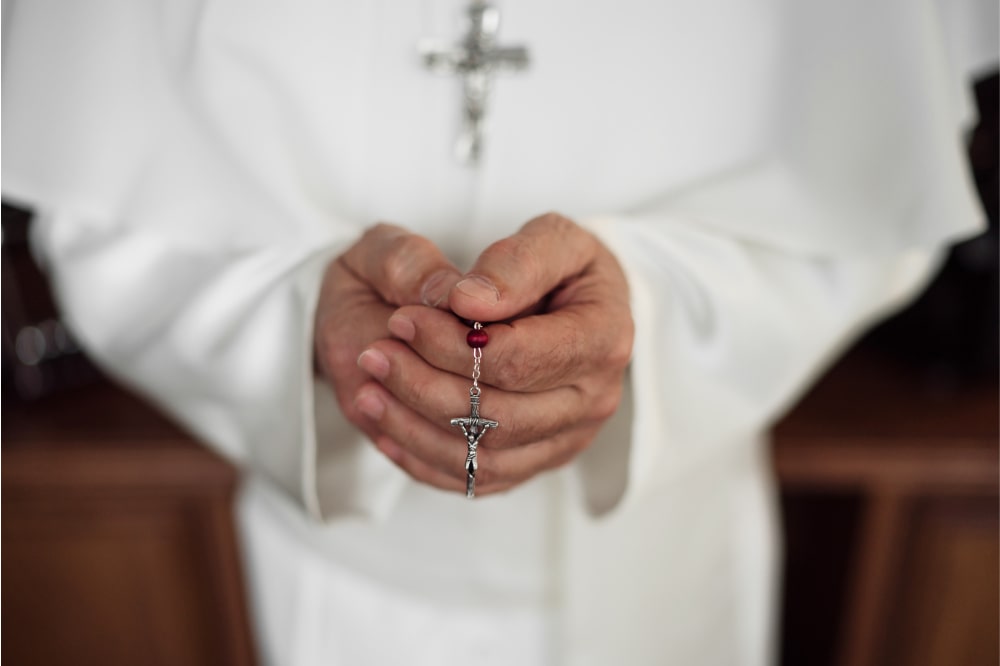
 5 June 2024
5 June 2024
